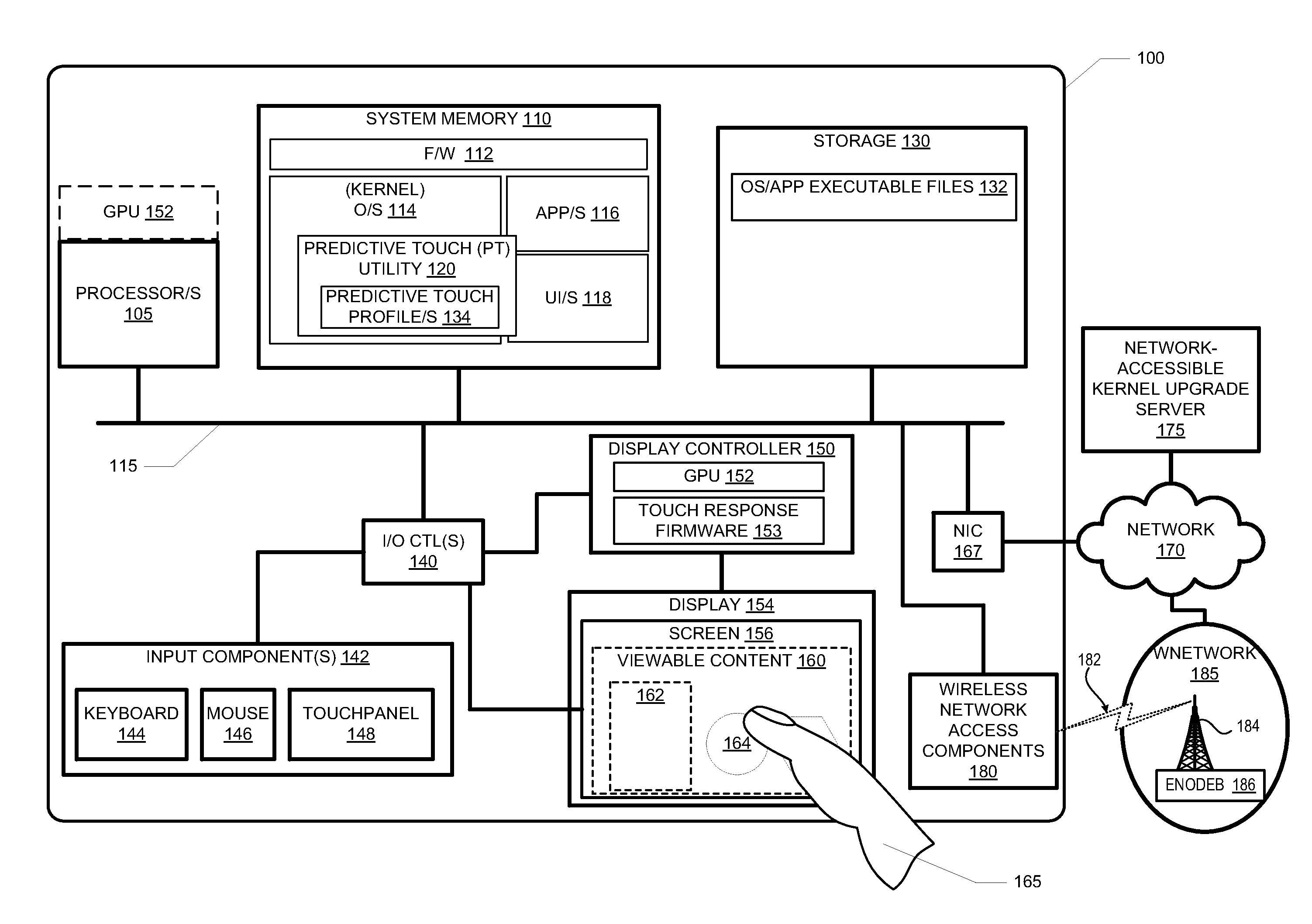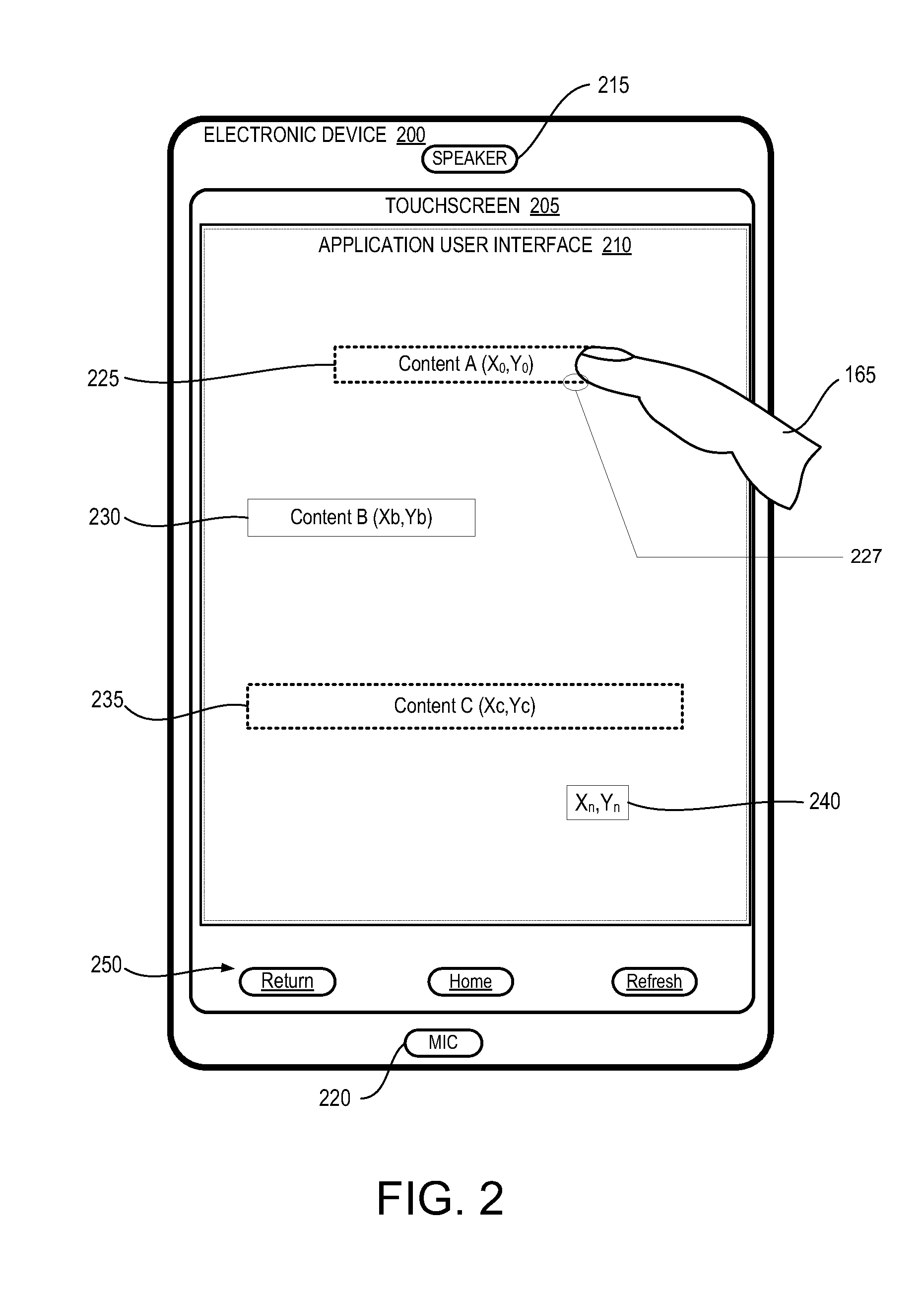Method and Device to Reduce Swipe Latency
a swipe and latency technology, applied in the field of touch-based users, can solve the problems of inability to respond at the speed at which a swipe occurs, conventional applications exhibit significant delays, and inputs that are inherent delays in the responsiveness of the screen
- Summary
- Abstract
- Description
- Claims
- Application Information
AI Technical Summary
Benefits of technology
Problems solved by technology
Method used
Image
Examples
Embodiment Construction
[0020]The present disclosure provides a user electronic device and a method for reducing touch swipe latency within a user interface of the electronic device. As utilized herein, the term “swipe” refers to linear and / or non-linear drag, slide, arc, and other types of touch-gesture movements. The method includes activating a predictive touch algorithm (or function) within the electronic device. In response to detecting a sliding movement of an external manipulator, such as a finger or stylus, from a set of prior positions detected by a touchpanel to a current position on the surface, the method dynamically computes a predicted next position based on the set of prior positions and the current position—while the external manipulator continues to touch the surface but before the manipulator arrives at an end position. The method results in the advancements of the user interface to a predicted next frame corresponding to the predicted next position.
[0021]The process of activating the pre...
PUM
 Login to View More
Login to View More Abstract
Description
Claims
Application Information
 Login to View More
Login to View More - R&D
- Intellectual Property
- Life Sciences
- Materials
- Tech Scout
- Unparalleled Data Quality
- Higher Quality Content
- 60% Fewer Hallucinations
Browse by: Latest US Patents, China's latest patents, Technical Efficacy Thesaurus, Application Domain, Technology Topic, Popular Technical Reports.
© 2025 PatSnap. All rights reserved.Legal|Privacy policy|Modern Slavery Act Transparency Statement|Sitemap|About US| Contact US: help@patsnap.com



